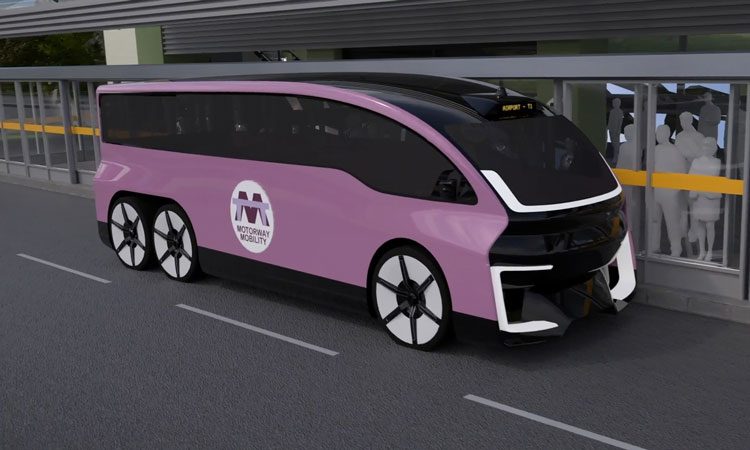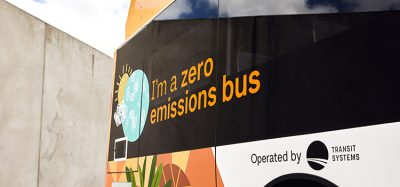CPC to explore new concept of public transport on UK motorways
- Like
- Digg
- Del
- Tumblr
- VKontakte
- Buffer
- Love This
- Odnoklassniki
- Meneame
- Blogger
- Amazon
- Yahoo Mail
- Gmail
- AOL
- Newsvine
- HackerNews
- Evernote
- MySpace
- Mail.ru
- Viadeo
- Line
- Comments
- Yummly
- SMS
- Viber
- Telegram
- Subscribe
- Skype
- Facebook Messenger
- Kakao
- LiveJournal
- Yammer
- Edgar
- Fintel
- Mix
- Instapaper
- Copy Link
Posted: 18 July 2019 | Intelligent Transport | 1 comment
The vision of ‘Motorway Mobility’ is to use the existing motorway infrastructure together with autonomous vehicles and new transport hubs near to the motorway.


A newly announced project will use autonomous technology to reimagine the UK’s motorways as an extensive public transport network using self-driving, electric vehicles and roadside stations.
The Connected Places Catapult’s (CPC) “Motorway Mobility” project, funded by Highways England and supported by innovative vehicle manufacturer Arrival, could provide a whole new mode of high capacity, demand responsive public transport.
The vision of ‘Motorway Mobility’ is to use the existing motorway infrastructure together with autonomous vehicles and new transport hubs near to the motorway, to provide new or more frequent services between a wide variety of locations across the country.
The CPC and other industry experts suggest autonomous vehicles could significantly reduce the cost of providing public transport for operators and provide a means to reduce private car use and congestion. This concept enables a new way of delivering public transport, with a larger number of smaller vehicles which could better respond to passenger demand and reduce waiting times and journey times. Motorway Mobility would also make new route options possible, particularly in areas that are not well served by existing public transport services.
“The Motorway Mobility concept can be imagined as a new rail network, for which our existing motorways are the rails and automated vehicles are the self-driving carriages. It enables the whole of the motorway network to be reimagined as a public transport network,” commented Neil Fulton, Chief Operating Officer at the Connected Places Catapult.
“This feasibility study will explore how frequent and convenient services of this type throughout the day and night could enable users to switch from the private car to public transport. This will give people back some of their free time that was spent driving, during which they could catch up on work or simply relax. This will also lead to reduced congestion, improved safety, reduced public transport journey times and will create new business opportunities.”
The Connected Places Catapult will explore how vehicle manufacturers, autonomous control system developers, small and large companies, local employers, local authorities, public transport operators, social-behavioural experts and other organisations can work together to create this new public transport mode. It is hoped the solution will be scalable across the whole of the UK’s motorway network and beyond, in the future.
The Catapult is looking for innovative, forward thinking businesses to engage with for potential future phases of the project. Those interested in getting involved in this or similar projects, should visit the Catapult website.
Related topics
Connected & Autonomous Vehicles, Mobility Services
Related cities
UK
Related organisations
Connected Places Catapult
Related people
Neil Fulton









I’ve been pressing the idea of bus (coach) stops on motorways for a few years now – some potential sites – M4 near Swindon as it passes close to the Nationwide HQ – M8 Whitburn where the M8 crosses the old A8 close to Whitburn Cross – M90 – replacing a slow ride through Milnathort & Kinross with a stop accessible from both – M40 – relocate/upgrade Lewknor away from junction, closer to settlements – A9 at Pitlochry, and Kingussie – on main road. Potential to deliver coach journey times to match or beat driving and parking, and reduce PVR on many coach services, a scaled-down refinement on J14 and Broxden.
Using the modern ticket machines there us also a delivery for this and rural routes, of a manifest for each stopping point with driver input also declaring available seats/wheelchair spaces, etc. This can also ‘seal’ connections with local ‘taxi’ collector/distributor services, and make ‘request stop’ options available. These stops MUST NOT be at or on motorway junctions.
‘Lay-bys’ would have deterrents for non PCV access (drop-road – too deep for cars to pass over, discomfort for PCV if approached too fast) & PCV approach speed controls (beacon switched speed limiters – proven systems), plus deterrents for pedestrians using vehicle access gateways (per VCS arrivals). Main access on foot/cycle/local bus calling nearby. Car parking nearby but not necessarily adjacent.
When can we start?